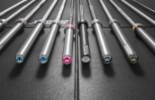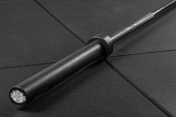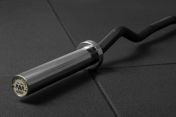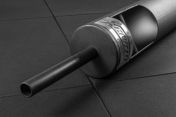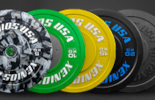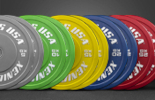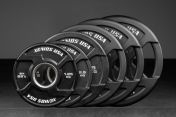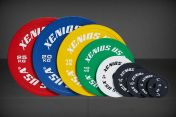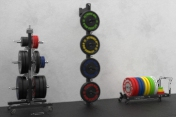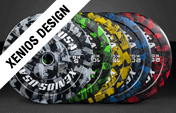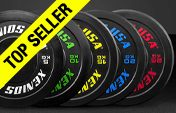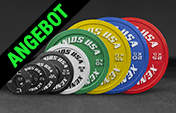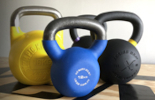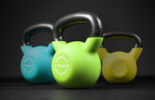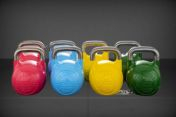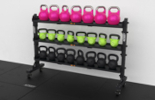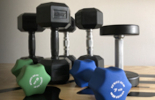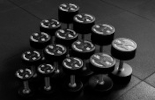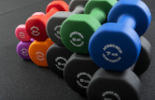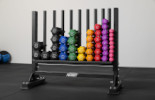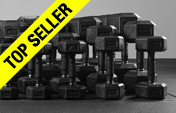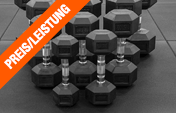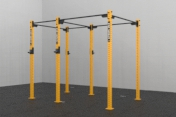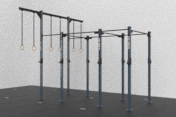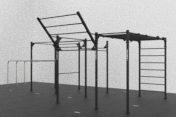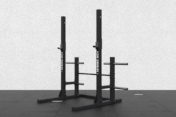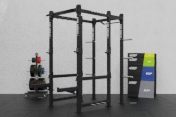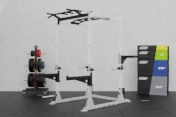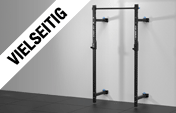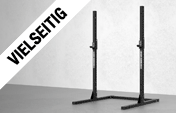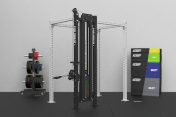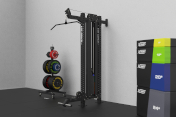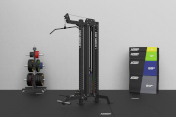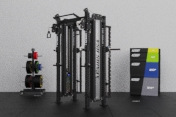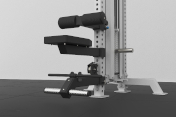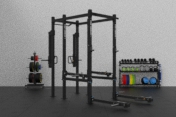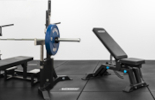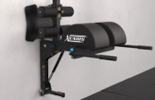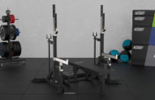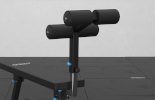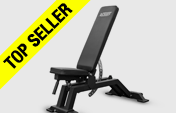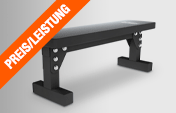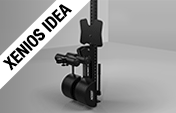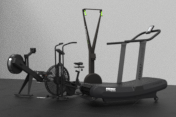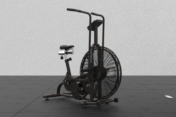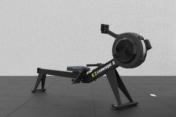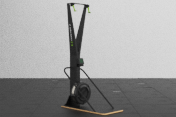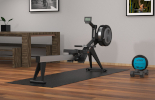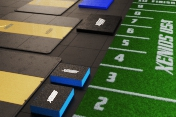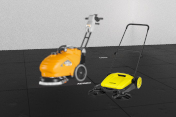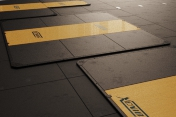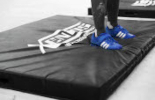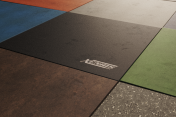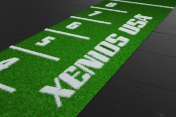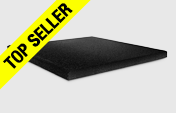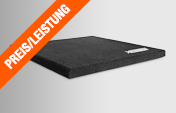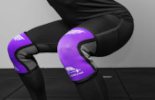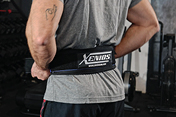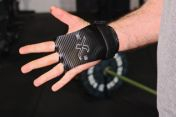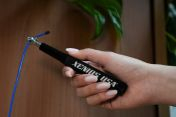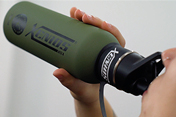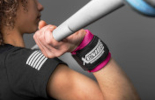Was ist dieses Dokument? Dieses Dokument enthält Informationen über die Verarbeitung personenbezogener Daten im Zusammenhang mit dieser Website.
An wen ist dieses Dokument gerichtet? Die Informationen richten sich an alle Besucher und Kunden, die mit der Website interagieren.
Warum dieses Dokument? Nationale und internationale Datenschutzvorschriften verlangen, dass Sie als Interessent darüber informiert werden, welche personenbezogenen Daten verarbeitet werden und wer diese verarbeiten wird, um eine korrekte und transparente Verarbeitung sicherzustellen.
Im Folgenden ist daher klar aufgeführt, wer Ihre Daten verarbeitet, welche personenbezogenen Daten verarbeitet werden, zu welchen Zwecken die personenbezogenen Daten verarbeitet werden, wie lange die Daten verarbeitet werden, welche Rechte Sie haben und wie Sie diese ausüben können.
Auf welche Normen bezieht sich dieses Dokument? Die Informationen werden unter Berücksichtigung der kombinierten Anwendung der folgenden Normen bereitgestellt:
- Gesetz 171/2018 zum Schutz natürlicher Personen bei der Verarbeitung personenbezogener Daten (im Folgenden „Gesetz“)
- Europäische Datenschutzverordnung (DSGVO) EU 2016/679 (im Folgenden „Verordnung“)
- Europäische Richtlinie 2002/58/EG, die sogenannte „e-Privacy“ -Richtlinie.
1) VERANTWORTLICHE STELLE
Duke S.p.A. - Strada Acquasalata, 4 - 47899 Serravalle (Rep. San Marino) – C.O.E. SM22855 - E-Mail [email] - Tel. (+378) 0549 904251
Vertreter des Verantwortlichen in der Europäischen Union :
PRIVACY365 Italia S.r.l. Viale Berna 9/B - 47924 Rimini (RN) - art27gdpr@privacy365.eu - PEC: privacy365italia@pec.it - Tel. (+39) 0541 1647198
2) ZWECK, RECHTSGRUNDLAGE, SPEICHERDAUER UND ART DER VERARBEITUNG
Ihre personenbezogenen Daten werden zu folgenden Zwecken verarbeitet:
a. Kauf im Online-Shop:
- die Rechtsgrundlage dieser Verarbeitung ist die Notwendigkeit der Erfüllung eines Vertrags, an dem der Interessent beteiligt ist
- die Dauer der Speicherung der zu diesem Zweck verarbeiteten Daten ist die Vertragsdauer und im Falle eines Rechtsstreits für die gesamte Dauer bis zur Erschöpfung der Rechtsmittelfristen
- die Angabe personenbezogener Daten, die mit einem Sternchen (*) gekennzeichnet sind, ist für den Kauf erforderlich, und jede Verweigerung macht die Bearbeitung der Bestellung unmöglich
b. Registrierung im reservierten Bereich des Online-Shops:
- die Rechtsgrundlage dieser Verarbeitung ist die Notwendigkeit der Erfüllung eines Vertrags, an dem der Interessent beteiligt ist
- die Dauer der Speicherung der zu diesem Zweck verarbeiteten Daten ist die Vertragsdauer und im Falle eines Rechtsstreits für die gesamte Dauer bis zur Erschöpfung der Rechtsmittelfristen
- die Angabe personenbezogener Daten, die mit einem Sternchen (*) gekennzeichnet sind, ist für den Kauf erforderlich, und jede Verweigerung macht die Bearbeitung der Bestellung unmöglich
c. Versand von Informations- und Werbematerial (Soft-Spam), auch per E-Mail und SMS (Mailingliste, Angebote usw.) ähnlich bereits erbrachter Produkte oder Dienstleistungen
- die Rechtsgrundlage dieser Verarbeitung ist die Verfolgung des berechtigten Interesses des Verantwortlichen, seinen Kunden ähnliche Produkte oder Dienstleistungen anzubieten, wie die bereits erbracht wurden
- die zu diesem Zweck verarbeiteten Daten werden so lange gespeichert, bis die beteiligte Person die Abmeldung vom Dienst von Werbemitteilung beantragt
d. Anonyme Marktforschung (Umfragen und Analysen der Kundenzufriedenheit)
- die Rechtsgrundlage dieser Verarbeitung ist die Verfolgung des berechtigten Interesses des Verantwortlichen an der Durchführung anonymer Analysen der Kundenzufriedenheit
- die zu diesem Zweck verarbeiteten Daten werden so lange gespeichert, bis die beteiligte Person beschließt, ihre Rechte gemäß Art. 15 ff. des Gesetzes und der Verordnung auszuüben.
e. Beantwortung von Anfragen aus dem Formular:
- die Rechtsgrundlage dieser Verarbeitung ist die notwendige Durchführung vorvertraglicher Maßnahmen, die auf Antrag des Interessenten, deren Vertragspartei er ist, getroffen werden
- die Dauer der Speicherung der zu diesem Zweck verarbeiteten Daten entspricht der Zeit, die für die Bearbeitung der Anfrage erforderlich ist
- die Angabe personenbezogenen Daten, die mit einem Sternchen (*) gekennzeichnet sind, ist für die Bearbeitung der Anfrage erforderlich, und jede Verweigerung macht eine erneute Kontaktaufnahme mit dem Interessenten unmöglich
f. Zusendung von Informations- und Werbematerial (Direktmarketing), auch per E-Mail und SMS (Mailingliste, Angebote usw.):
- die Rechtsgrundlage dieser Verarbeitung ist die ausdrückliche Zustimmung des Interessenten
- die zu diesem Zweck verarbeiteten Daten werden so lange gespeichert, bis die beteiligte Person die Abmeldung vom Dienst von Werbemitteilungen / Newsletter beantragt. Bitte beachten Sie, dass die Einwilligung jederzeit widerrufen werden kann, unbeschadet der Rechtmäßigkeit der Verarbeitung vor dem Widerruf.
g. Analyse der Konsumgewohnheiten und -entscheidungen (Profiling), Durchführung von Marktforschungen (Umfragen und Analysen der Kundenzufriedenheit):
- die Rechtsgrundlage dieser Verarbeitung ist die ausdrückliche Zustimmung des Interessenten
- die Speicherungsfrist der zu diesem Zweck verarbeiteten Daten beträgt bis der Interessent seine Einwilligung widerruft. Bitte beachten Sie, dass die Einwilligung jederzeit widerrufen werden kann, unbeschadet der Rechtmäßigkeit der Verarbeitung vor dem Widerruf.
- weitere Informationen zur angewandten Logik und zum Schutz der beteiligten Person erhalten Sie auf schriftliche Anfrage an den Verantwortlichen
h. Verhinderung, Feststellung und Verfolgung von rechtswidrigem Verhalten:
- die Rechtsgrundlage dieser Verarbeitung ist die Verfolgung des berechtigten Interesses des Verantwortlichen, um Straftaten oder Verletzungen von Rechten des geistigen / gewerblichen Eigentums (einschließlich Dritten) oder Computerkriminalität oder über Telematiknetze begangene Straftaten zu verhindern, festzustellen und zu verfolgen
- die Speicherungsfrist der zu diesem Zweck verarbeiteten Daten entspricht der Zeit, die vernünftigerweise erforderlich ist, um die Rechte des Verantwortlichen ab dem Zeitpunkt, an dem die Straftat oder ihre mögliche Begehung bekannt wurde, geltend zu machen
3) VERARBEITETE PERSONENBEZOGENE DATEN
Die Verarbeitung personenbezogener Daten bezeichnet jeden mit oder ohne Hilfe automatisierter Verfahren ausgeführten Vorgang oder jede solche Vorgangsreihe im Zusammenhang mit personenbezogenen Daten oder einer Reihe personenbezogener Daten, wie das Erheben, die Speicherung, die Organisation, die Strukturierung, die Aufbewahrung, die Anpassung oder Veränderung, das Auslesen, das Abfragen, die Verwendung, die Weitergabe durch Übermittlung, Verbreitung oder jede andere Form der Bereitstellung, der Kombination oder der Verknüpfung, sowie das Einschränken, das Löschen oder die Vernichtung.
Qualifizierte Daten können auch vom Interessenten (z. B. Kontaktformular im Feld "Nachricht") gemäß Art. 8 des Gesetzes und Art. 9 der Verordnung, als „besondere Kategorien personenbezogener Daten“ eingestuft werden, d.h. Daten, aus denen die rassische oder ethnische Herkunft, politische Meinungen, religiöse oder philosophische Überzeugungen oder die Gewerkschaftszugehörigkeit hervorgehen, sowie Daten über die Gesundheit oder das Sexualleben oder die sexuelle Orientierung der Person. Diese Datenkategorie wird vom Verantwortlichen verarbeitet, um die eingegangene Anfrage zu bearbeiten. Die Weiterverarbeitung bestimmter Datenkategorien durch den Verantwortlichen erfolgt nur nach vorheriger und ausdrücklicher Zustimmung.
Die verarbeiteten personenbezogenen Daten sind folgende:
• Im Online-Kaufformular erforderliche Angaben:
Mit dem Absenden der Anfrage verarbeitet der Verantwortliche die folgenden personenbezogenen Daten: Vor- und Nachname, E-Mail-Adresse, Telefonnummer, Mobilnummer, Geburtsdatum, Wohn- und Lieferadresse (Land, Provinz, Stadt, Postleitzahl und Straße), persönliche Steuernummer (Steuernummer, ISS-Code [Staatliches Institut für Soziale Sicherheit], usw.), alle personenbezogenen Daten, die im Feld „Bestellnotizen“ enthalten sind.
• Im Kontaktformular erforderliche Angaben:
Durch das Absenden der Anfrage verarbeitet der Verantwortliche die folgenden personenbezogenen Daten: Vor- und Nachname, E-Mail-Adresse, Telefonnummer, Land, Stadt und die im Feld “Nachricht” enthaltenen personenbezogenen Daten
• Daten, die im Kontaktformular zur Anfrage eines Leasingangebotes benötigt werden:
Durch das Absenden der Anfrage verarbeitet der Verantwortliche die folgenden personenbezogenen Daten: Vor- und Nachname, Anschrift, Ort, Postleitzahl, E-Mail-Adresse, Telefonnummer, Land, Steuernummer und Umsatzsteuer-Identifikationsnummer sowie alle im Feld "Nachricht" enthaltenen personenbezogenen Daten
• Navigationsdaten
Die Computersysteme und Softwareverfahren, die für den Betrieb dieser Website verwendet werden, erfassen während ihres normalen Betriebs einige personenbezogene Daten, deren Übertragung bei der Verwendung von Internet-Kommunikationsprotokollen implizit ist.
Unter diese kategorie von Daten fallen die IP-Adressen oder die Domänennamen der Computer und Endgeräte von Website-Besuchern, die Adressen in der URI/URL-Notierung (Uniform Resource Identifier/Locator) der aufgerufenen Ressourcen, die Uhrzeit der Anfrage, die zur Übermittlung der Anfrage an den Server verwendete Methode, die Größe der als Antwort erhaltenen Datei, der Zahlencode, der den Status der vom Server gegebenen Antwort anzeigt (erfolgreich, fehlerhaft usw.), sowie andere Parameter, die sich auf das Betriebssystem und die Softwareumgebung des Benutzers beziehen. Diese Daten, die für die Nutzung der Webservices erforderlich sind, werden auch verarbeitet, um statistische Informationen über die Nutzung der Dienstleistungen zu erhalten (meistbesuchte Seiten, Anzahl der Besucher pro Zeitfenster oder pro Tag, geografische Herkunftsgebiete usw.) und um das ordnungsgemäße Funktionieren der angebotenen Dienstleistungen zu überprüfen.
Die Browsing-Daten bleiben nicht länger als 365 Tage gespeichert und werden unmittelbar nach ihrer Zusammenstellung gelöscht (außer im Falle strafrechtlicher Ermittlungen der Justizbehörden).
• Vom Benutzer übermittelte Daten
Das optionale, ausdrückliche und freiwillige Senden von Nachrichten an die Kontaktadressen des Verantwortlichen beinhaltet die Erfassung der Kontaktdaten des Absenders, die für die Beantwortung erforderlich sind, sowie der in den Mitteilungen enthaltenen personenbezogenen Daten.
• Cookies und andere Tracking-Systeme
Bitte beachten Sie die ausführlichen Informationen unter folgendem Link: www.xeniosusa.com/en/cookie-policy/
4) EMPFÄNGER PERSONENBEZOGENER DATEN
Ihre personenbezogenen Daten können zu den oben genannten Zwecken weitergegeben werden an:
- Personen, die typischerweise als „Datenverarbeiter“ gemäß Art. 29 des Gesetzes und Art. 28 der Verordnung, d. h. Personen, Unternehmen oder Fachleute, die dem Verantwortlichen in Bezug auf die Bereitstellung von Dienstleistungen / Produkten Hilfe und Beratung leisten
- Personen, mit denen für die Bereitstellung von Dienstleistungen / Produkten eine Interaktion erforderlich ist (z. B. ihr eigenes Vertriebsnetz);
- Personen, Einrichtungen oder Behörden, denen die Übermittlung Ihrer personenbezogenen Daten aufgrund gesetzlicher Vorschriften oder behördlicher Anordnungen vorgeschrieben ist
- Personal, das gemäß Art. 30 des Gesetzes und Art. 29 der Verordnung ausdrücklich vom Verantwortlichen ermächtigt wurde, um Tätigkeiten auszuführen, die eng mit der Erbringung von Dienstleistungen / Produkten verbunden sind, die zur Vertraulichkeit verpflichtet sind oder eine angemessene rechtliche Geheimhaltungspflicht haben und dass sie eine ausreichende Bedienungsanleitung erhalten haben
Die vollständige Liste der für die Datenverarbeitung Verantwortlichen ist vom Verantwortlichen auf schriftliche Anfrage erhältlich.
5) ÜBERMITTLUNG PERSONENBEZOGENER DATEN
Einige Ihrer personenbezogenen Daten werden an Empfänger weitergegeben, die sich außerhalb der Republik San Marino und des Europäischen Wirtschaftsraums (EWR) befinden können. Der Verantwortliche stellt sicher, dass die Verarbeitung Ihrer personenbezogenen Daten durch diese Empfänger in Übereinstimmung mit dem Gesetz und den Vorschriften erfolgt. Übermittlungen können nämlich auf einer Angemessenheitsentscheidung oder auf den von der Europäischen Kommission genehmigten Standardvertragsklauseln beruhen.
Weitere Informationen sind beim Verantwortlichen erhältlich.
6) AUTOMATISIERTE ENTSCHEIDUNGSFINDUNG EINSCHLIESSLICH PROFILING
Der Verantwortliche hat keine automatisierte Entscheidungsfindung über die Verarbeitung personenbezogener Daten, einschließlich Profiling, gemäß Art. 22 des Gesetzes und der Verordnung. Weitere Informationen sind beim Verantwortlichen erhältlich.
7) DATEN ZU MINDERJÄHRIGEN UNTER 18 JAHREN
Minderjährige unter 18 Jahren können keine personenbezogenen Daten bereitstellen. Der Verantwortliche ist in keiner Weise verantwortlich für die Erhebung personenbezogener Daten sowie für falsche Angaben des Minderjährigen, und in jedem Fall wird der Verantwortliche, wenn sie verwendet werden, das Recht auf Zugang und Löschung durch den Vormund oder denjenigen, der die elterliche Verantwortung ausübt, weiterleiten
8) RECHTE DER BETROFFENEN PERSON
Die betroffene Person hat das Recht, vom Verantwortlichen in den vorgesehenen Fällen den Zugriff auf ihre personenbezogenen Daten und deren Berichtigung oder Löschung bzw. Einschränkung der Verarbeitung zu erhalten oder Widerspruch gegen die Verarbeitung einzulegen (Art. 15 ff. des Gesetzes und der Verordnung). Die entsprechende Anfrage an den Verantwortlichen wird gestellt, indem Sie sich an die E-Mail-Adresse wenden, die für die Beantwortung der betroffenen Person zuständig ist, oder indem Sie das im speziellen Datenschutzbereich verfügbare Formular ausfüllen.
9) WIDERSPRUCHSRECHT
Wenn die betroffene Person der Ansicht ist, dass die Verarbeitung der ihm übermittelten personenbezogenen Daten gegen die Bestimmungen der Gesetze und Verordnungen verstößt, hat er das Recht, Widerspruch einzulegen:
- im Hoheitsgebiet der Republik San Marino an die Behörde für den Schutz personenbezogener Daten (www.garanteprivacy.sm) gemäß Art. 66 des Gesetzes, oder die zuständigen Richterämter zu befassen (Art. 70 des Gesetzes)
- falls im Gebiet der Europäischen Union an die italienische Datenschutzbehörde (www.gpdp.it) gemäß Art. 77 der Verordnung selbst oder die zuständigen Richterämter zu befassen (Art. 79 der Verordnung)
10) MODALITÄTEN FÜR DIE AUSÜBUNG DER RECHTE
Um die oben genannten Rechte auszuüben, können Sie auf den Datenschutzbereich der Website www.xeniosusa.com zugreifen, das entsprechende bereitgestellte Formular verwenden oder sich an die verantwortlichen Personen für die Beantwortung des Interessenten wenden:
- Verantwortliche Stelle:
Datenschutzbüro c / o Duke S.p.A. - Strada Acquasalata, 4 - 47899 Serravalle (Rep. San Marino) - COE SM22855 - E-Mail [email] - Tel. (+378) 0549 904251
- Vertreter des nicht in der EU ansässigen Verantwortlichen:
PRIVACY365 Italia Srl viale Berna 9B - 47924 Rimini (RN) - art27gdpr@privacy365.eu - PEC: privacy365italia@pec.it - Tel. (+39) 0541 1647198
11) ÄNDERUNGEN
Die verantwortliche Stelle behält sich das Recht vor, diese Informationen jederzeit zu ändern und / oder zu ergänzen und verpflichtet sich, die Änderungen auf der Website www.xeniosusa.com im Bereich Datenschutz zu veröffentlichen und / oder die Kunden auf die am besten geeignete Weise zu informieren.
Website-Informationen - gültig ab 01/01/2021

